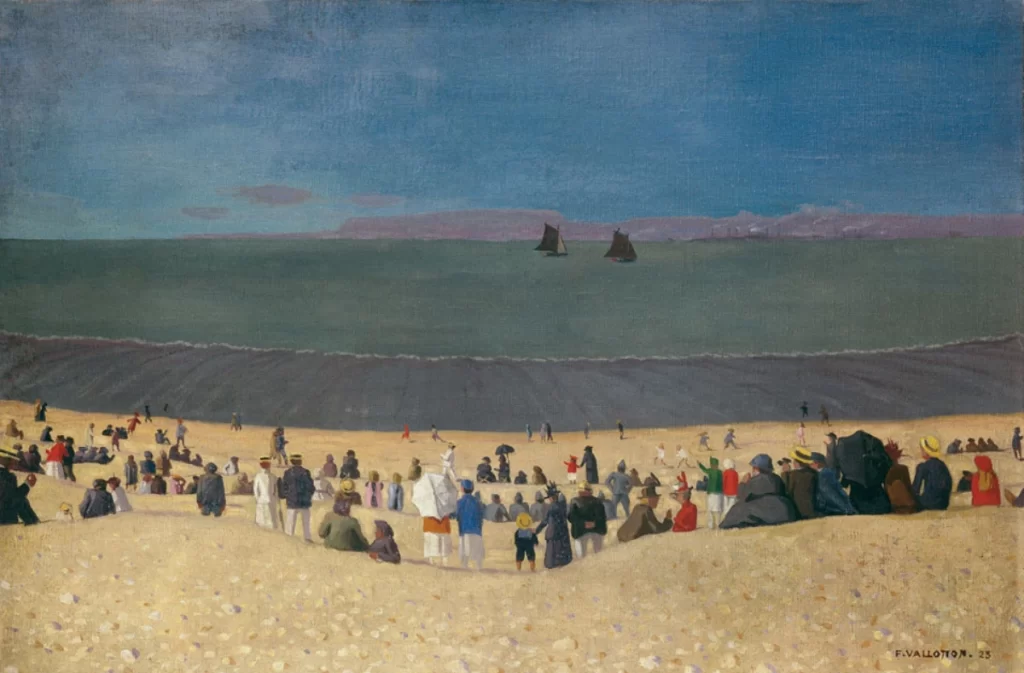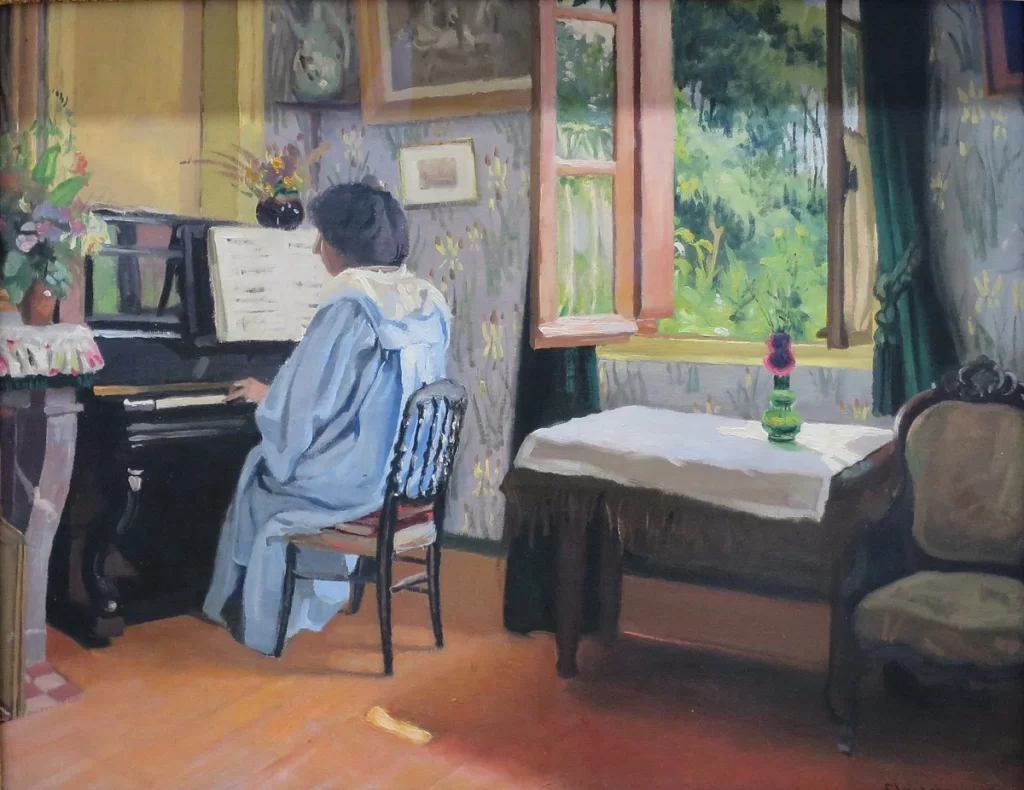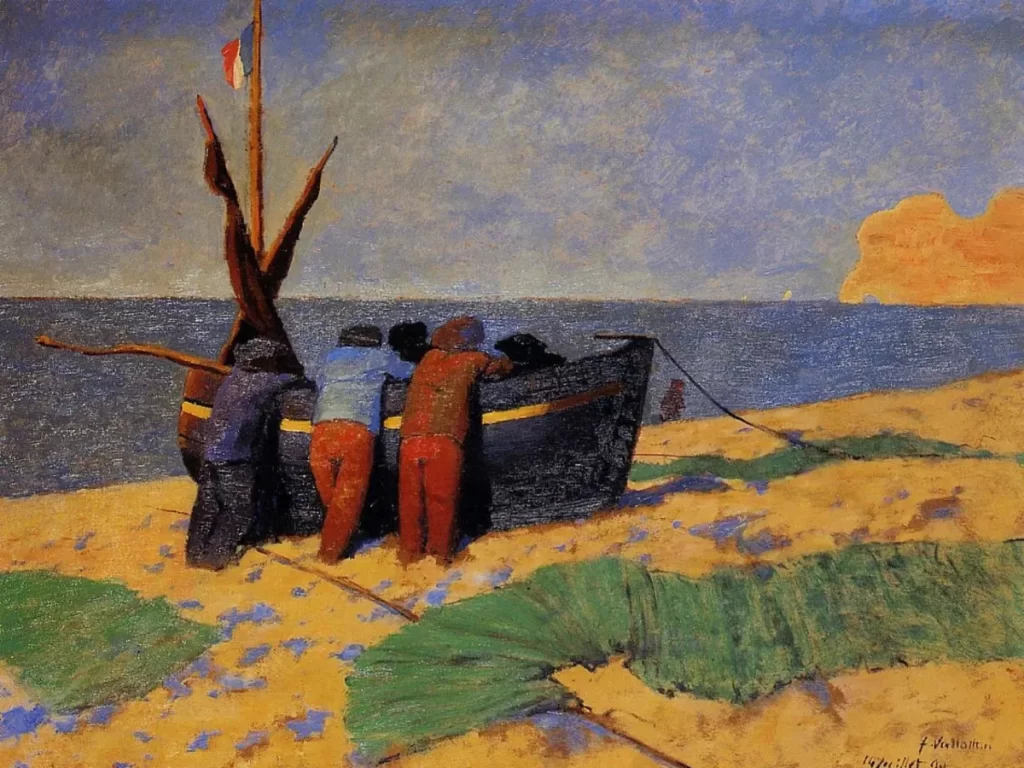The life I live is the opposite of the life I dreamed of. I love seclusion, silence, cultivated thinking and reasoned action – and I have to deal with machinations, foolish talk and vain affectation.
Felix Vallotton
Who Was Felix Vallotton
Felix Edouard Vallotton was a Swiss-born French painter, printmaker, illustrator, and writer. He was born on December 28, 1865, in Lausanne, Switzerland, and spent much of his childhood in Paris, where his father was a painter. Vallotton began his artistic training at the École des Beaux-Arts in Paris and later studied with the painter Puvis de Chavannes. His work is held in numerous museums around the world, including the Metropolitan Museum of Art in New York and the National Gallery in London.

Courtesy – Wikipedia
In his early years, artist Felix Vallotton became interested in portrait painting. He occasionally returned to Switzerland, where he painted landscapes in the region of Vaud. In Paris, he became interested in the art of engraving. Two of his etchings were inspired by Jean-François Millet and Rembrandt. In 1891, he produced his first woodcuts and presented ten paintings in his debut at the Salon des Indépendants.
Felix Vallotton’s Art Style
Felix Vallotton is known for his paintings of everyday life, his portraits, and his woodcuts, which are considered some of the finest in the medium’s history. He was an important figure in the development of modern woodcut print. His works are closely associated with the art movements of symbolism and Intimism, and his work often featured stark, flat landscapes, figures, and still lifes.

Oil on canvas, 54 x 81 cm
Courtesy – Wikimedia Commons
The Impressionist movement strongly influenced Vallotton’s early works. He often used broad, flat areas of colour, broken up by hard edges, to create a mood of contrast and mystery. His later works were more realistic, with a darker and more realistic palette. Artist Felix Vallotton’s work was often political and critical of society, and he was an outspoken critic of the French and Swiss governments.

Courtesy – Wikimedia Commons
He was known for his sharply defined, realistic style which captured the mood and atmosphere of a scene. Felix Vallotton’s artwork was characterized by strong lines, bold brushstrokes, and a focus on detail. He was particularly known for his woodcuts, which he used to illustrate books and magazines. His subjects ranged from landscapes and still lifes to portraits and scenes of everyday life, and he was also a talented portrait painter.

Courtesy – Wikimedia Commons
In addition to his paintings, Vallotton was also a prolific printmaker, producing a large number of woodcuts and lithographs. He was also a prolific illustrator and contributed illustrations to many magazines and books. His work was characterized by a strong sense of composition, a keen eye for detail, and a dark, realistic style that is reminiscent of the work of Édouard Manet and Edgar Degas.

Courtesy – Arthive
He was a member of the Nabis group, a group of artists who were interested in creating prints and posters that were more expressive and expressive than traditional prints. Despite his association with the Nabis, Felix Vallotton’s artwork was distinctive and stands on its own. He is considered one of the leading figures of the French fin de siècle art movement.
Endeavours of Artist Felix Vallotton
He also wrote several books which contained political and social commentary, as well as a novel. Felix Vallotton was an influential figure in the art world and was a member of many important art groups, including the Salon des Independents, the Symbolist movement, and the Nabis. He was also a key figure in the foundation of the Société des Artistes Indépendants, a major avant-garde art organization.

Courtesy – Wikimedia Commons
Overall, Vallotton was an important figure in the art world of the late 19th and early 20th centuries, and his work continues to be admired and collected by art lovers around the world.
Image Courtesy – Wall Street Journal





